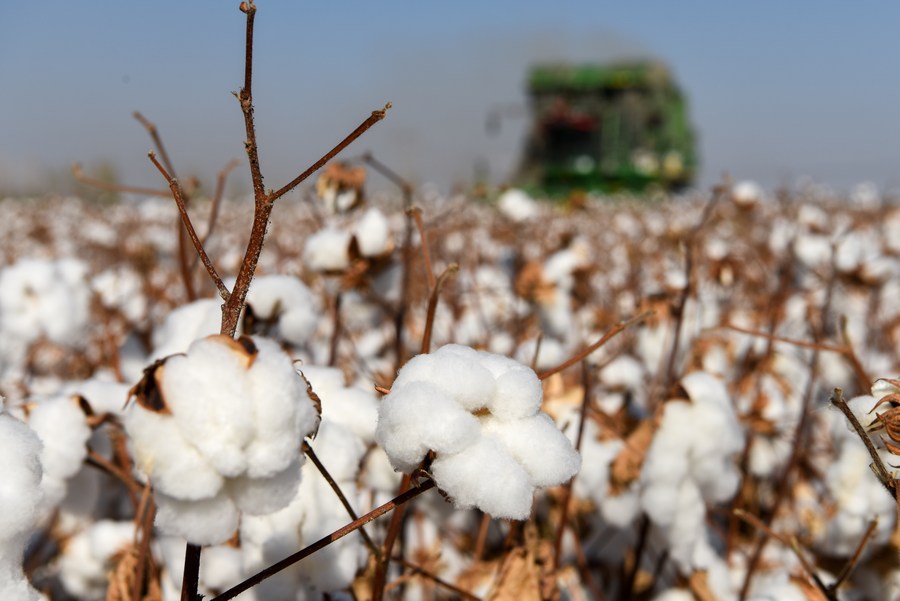
A cotton harvesting machine works in a field in Manas County, Hui Autonomous Prefecture of Changji, northwest China's Xinjiang Uygur Autonomous Region, Oct. 17, 2020. (File photo: Xinhua/Ding Lei)
URUMQI, Dec. 18 (Xinhua) -- Northwest China's Xinjiang Uygur Autonomous Region, the country's largest cotton growing area, has completed its cotton harvesting in what has been another bumper year.
The cotton output of Xinjiang hit 5.16 million tonnes in 2020, accounting for 87.3 percent of the total in China, according to the National Bureau of Statistics. Xinjiang's cotton output in 2019 was 5 million tonnes.
As a pillar of Xinjiang's rural economy, the cotton industry is a major source of income for farmers in the region and has helped many to shake off poverty.
The following facts and figures offer a glimpse of the latest progress the region has made in the industry:
-- Xinjiang has ranked first in the country for total cotton output, per unit output and planting area for 25 consecutive years.
-- In 2020, the total cotton planting area in Xinjiang was 2.51 million hectares, roughly the same as in 2019.
-- In 2020, about 484,900 rural households in Xinjiang were directly involved in cotton planting. Some 7 million people of different ethnic groups worked in the cotton planting and textile industry.
-- In 2019, Xinjiang's mechanized cotton harvesting area topped 766,667 hectares, exceeding 40 percent of the regional total for the first time. The ratio is expected to further rise as machinery increasingly replaces manual labor.
-- The production in more than 90 percent of cotton fields in northern Xinjiang has been fully mechanized, and the mechanization rate of cotton harvesting in southern Xinjiang has also been increasing year on year. Enditem


